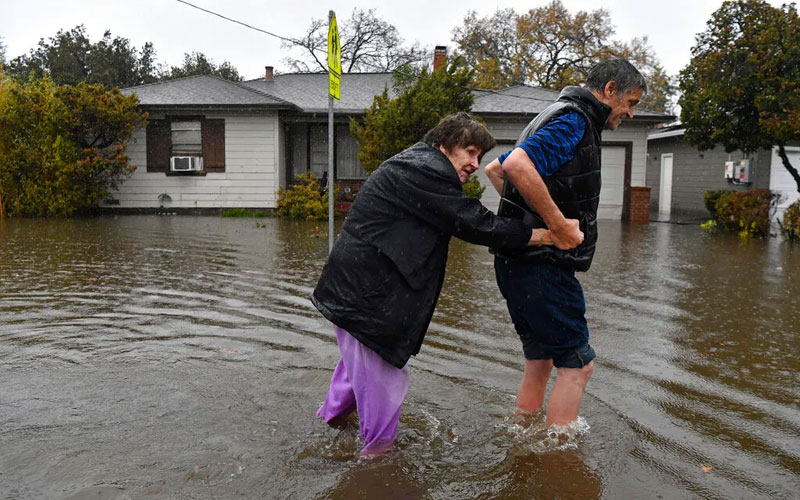
There are two types of flood insurance: one offered by FEMA and the other through private insurers. The type of coverage you need depends on several factors, including the current and future flood risks in your area.
FEMA draws and redraws flood maps constantly. That means your property may be in a moderate- to low-risk area now but may be designated as a high-risk zone later.
Building Coverage
Depending on the size of your home and the value of your belongings, you may need more or less coverage. A skilled insurance agent can assist you in determining the appropriate amount. Furthermore, you can lessen your risk of flooding and lower your premium by raising utilities, building flood openings, filling in basements, or elevating your house.
An NFIP policy covers the physical losses of your building and its contents (up to a maximum limit). It also covers the cost of moving and replacement expenses, living expenses, and rental income while your property is being repaired or rebuilt. A deductible applies to both the building and content coverage. A greater deductible equals a lower premium, but you must pay more out of pocket if you file a claim.
You can purchase an NFIP policy from your lender or an independent insurer, and you can choose a longer or shorter term and different deductible. If you live in a high-risk area, consider a private policy that offers more options. Some private insurers offer subsidized rates for homeowners who are grandfathered into an older flood zone or don’t still need to have their homes’ elevation levels updated in FEMA’s latest maps. These policies can cost much less than the NFIP rate. They may include other perks, such as better cleaning and repair coverage or a higher rebuilding limit.
Personal Property Coverage
While NFIP plans typically limit building coverage to $250,000 and contents coverage to $100,000, private insurers frequently offer more significant amounts. Those higher limits can help make South Carolina flood insurance more affordable for homeowners and renters who live in or near a flood zone and want to protect their belongings against water damage.
The amount of personal property coverage you need primarily depends on the value of your possessions and the size of your home. You can get a good idea of the value of your belongings by doing a home inventory. A comprehensive list and video recording of your belongings will serve as a helpful document if you need to file a claim.
Besides covering your property against flooding, some flood insurance policies also cover temporary living expenses or replacement costs for your items. However, many standard homeowners, condo, or renters insurance policies exclude coverage for flooding.
If your mortgage lender mandates flood insurance, it is most likely because the property is in a flood zone or you have a government-backed loan. However, if your property is outside of a mapped flood hazard area, you can still buy private flood insurance for both your building and its contents. That way, you can avoid a lender-mandated policy with extra add-on costs and lower coverage levels.
Flood Hazard Areas
A flood can cause significant damage and loss to your property, especially in areas designated as “flood zones.” One inch of water can cost $25,000 to a home. You can determine if your property is in a flood zone by entering your address into FEMA’s Flood Map Service Center. The resulting maps show if your property is in an AE or other high-risk area.
Generally, mortgage companies require homeowners in these areas to get flood insurance. However, there are ways to avoid lender-required coverage and reduce the cost of insurance, even in high-risk flood zones. One option is to have a survey done to see if your specific lot is elevated enough that you are not in a flood zone, even though the community as a whole may be.
Another option is to purchase a Preferred Risk Policy offered by the National Flood Insurance Program. This offers fixed combinations of building and contents coverage or only coverage at modest premiums for homes in low-risk B, C, and X zones. To qualify for a PRP, your home’s lowest level must be at or above the BFE specified on the NFIP’s map, and your residence, as well as all electrical, plumbing, and HVAC equipment, must be elevated.
Many homeowners outside high-risk zones still need insurance, as flood damage can happen anywhere.
Rebuilding Costs
When determining the amount of insurance coverage you need, you should look at the total replacement cost of your home and its contents. To do this, list everything you own and determine how much each item is worth. This is the value that you will use to determine the personal property coverage limit.
A home’s location—and specifically how at-risk it is for flooding—has a significant impact on flood insurance rates. The more risk your property poses, the higher the premium will be.
This method uses data from various sources, including local governments and community surveys, to determine a property’s likelihood of experiencing a flood in the future. It is designed to be more customized than previous methodologies, which are based on floodplain maps.
NFIP is federally backed, meaning your policy can’t be canceled because your risk changes. In general, NFIP policies are cheaper than private insurers.
USAA is one of our top picks for private flood insurance, writing policies nationwide for 1- to 4-family homes that have not experienced a flood loss. Their online quoting process is simple, with an intake form that asks for your address, flood zone, home size, and whether it is above water. They will then shop your application with a network of insurers to find the best offer.







